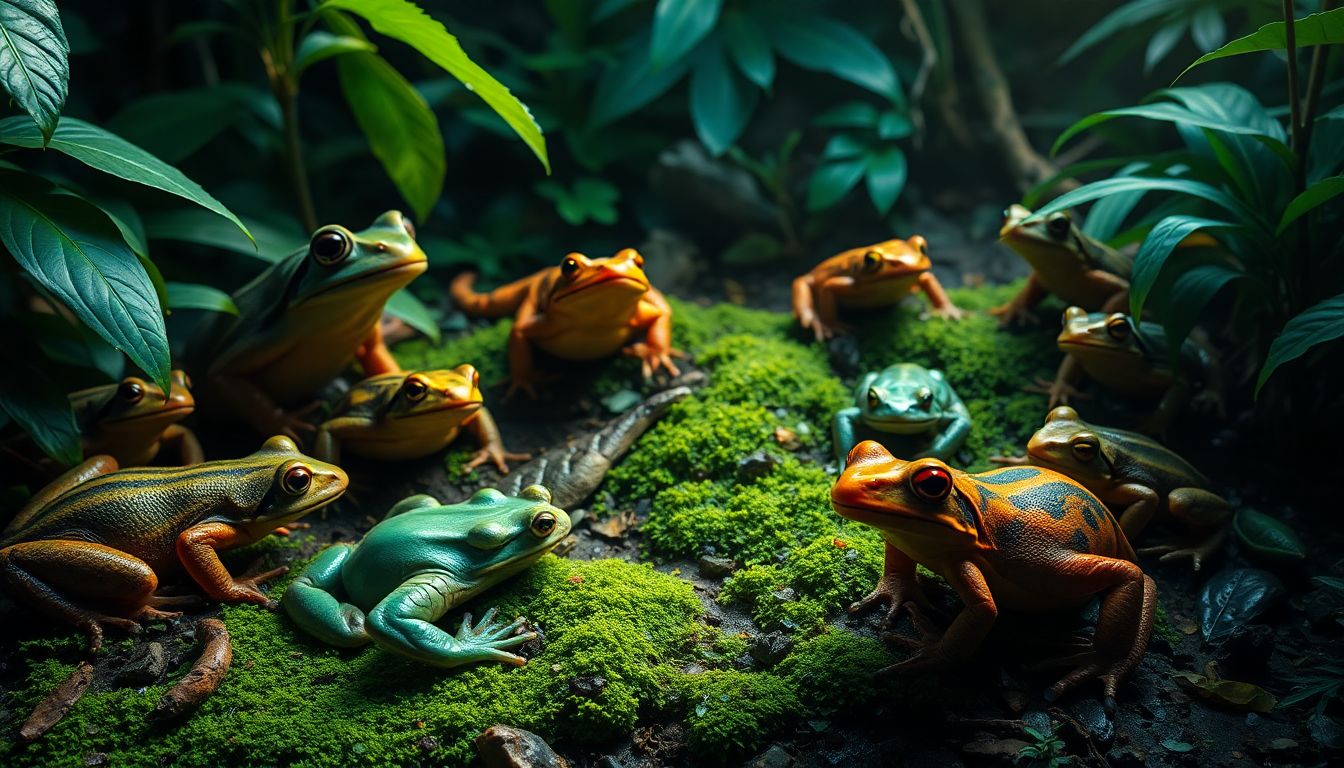
Imagine a creature that starts its life swimming like a fish, then sprouts legs and hops onto land. That's an amphibian! These animals lead double lives, splitting time between water and land. This article dives into the awesome world of amphibians, their history, and why they need our help today.
The Evolutionary History of Amphibians
Amphibians were the first vertebrates to crawl onto land. They mark a key point in the history of life. They hold a vital place in the tree of life, linking aquatic and terrestrial creatures.
From Fish to Frog: The Water-to-Land Transition
How did fish become frogs? Well, some fish developed adaptations that allowed them to survive in shallow water. Over time, these lobe-finned fish evolved into the first amphibians. They could explore new food sources and escape predators on land.
Key Adaptations for Terrestrial Life
Life on land is different than underwater. Early amphibians needed new tools. They evolved lungs to breathe air. They developed limbs for walking. Their skin needed to stay moist. However, amphibians still depend on water for reproduction, showcasing their bond with the aquatic realm.
Diversity and Classification of Amphibians
Amphibians are a diverse group. The main groups include frogs, salamanders, and caecilians. Each group has unique features and lifestyles.
Frogs and Toads: Masters of Leaping
Frogs and toads belong to the Anura order. They're known for their jumping ability. They also have long legs and lack tails as adults. Poison dart frogs flaunt bright colors as a warning, while glass frogs have see-through skin!
Salamanders and Newts: The Tailed Amphibians
Salamanders and newts belong to the Urodela order. These amphibians boast a tail and often keep a slender body. Amazingly, they can regrow limbs and other body parts. How cool is that?
Caecilians: The Limbless Wonders
Caecilians make up the Apoda order. These are weird amphibians without legs. They look a bit like snakes or worms. They burrow in the ground and use special senses to find food in the dark.
Amphibian Biology and Life Cycle
Amphibians sport some unique biology. Their life cycle shows their adaptation to both water and land.
Skin: A Vital Organ for Respiration and Protection
Amphibian skin is a busy organ. It helps them breathe and absorb water. Plus, skin secretions offer defense against predators. Some secretions even help with communication.
Metamorphosis: A Remarkable Transformation
Many amphibians undergo metamorphosis. They change from an egg to a larva (like a tadpole) to an adult. Hormones control this process. It's a wild change!
The Current Crisis: Amphibian Decline
Amphibian populations are shrinking worldwide. This decline is alarming. We need to understand what's happening and how to help.
Habitat Loss and Fragmentation
Deforestation destroys amphibian homes. Urban growth cuts up their habitat. Agriculture takes over their land. We need to protect and rebuild their homes.
Chytrid Fungus: A Deadly Threat
The chytrid fungus is a big killer of amphibians. This fungus infects their skin. It stops them from breathing and absorbing water. Scientists are working hard to find ways to fight this disease.
Climate Change and Pollution
Climate change messes with rainfall. It brings extreme temperatures. Pollution, like pesticides and heavy metals, hurts amphibians. These things make amphibians sicker and less likely to survive.
Conservation Efforts and What You Can Do
Many people are working to save amphibians. You can help, too! Small actions can make a big difference.
Protecting Habitats and Restoring Ecosystems
We need to save and fix amphibian habitats. This means creating protected areas. Also, it means rebuilding wetlands. Some conservation projects are already working well.
Citizen Science: Contributing to Amphibian Research
You can become a citizen scientist! You can help track amphibian populations. You can collect data. There are lots of ways to get involved.
Reducing Your Impact: Small Changes, Big Difference
Reduce your use of pesticides. Support sustainable farming. Conserve water. These small steps can help amphibians.
Conclusion
Amphibians are special creatures. They show us the story of evolution. They connect water and land. But they face big threats today. We must act to protect these animals. By helping amphibians, we help protect our planet's biodiversity.











0 Comments